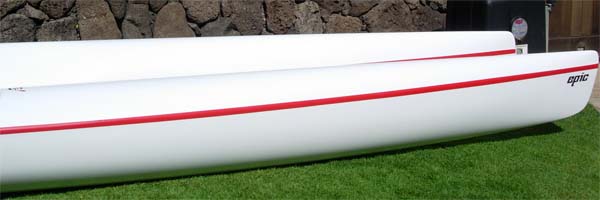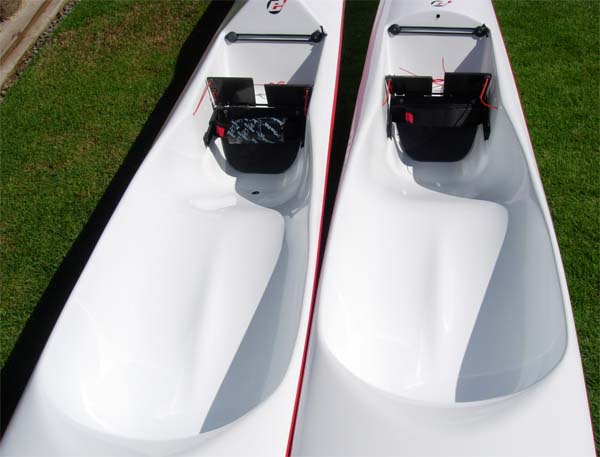The V10 Story
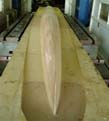 Anyone who's had the sales pitch from the Big O, knows that "the plug for the V10 was CNC machined - that's why the hull has such accurate lines."
Anyone who's had the sales pitch from the Big O, knows that "the plug for the V10 was CNC machined - that's why the hull has such accurate lines."
Oscar always goes on to point out the myriad of other features - the computer design, the venturi drain, the cockpit design, and so on. One thing's for sure: the guys at Epic are not shy about their achievements - and when I asked, I was presented with a range of fascinating photographs and information about the development of the V10 ski.
Computer Design
The story began in 2003 when John Dixon, a computer wizard based in California, wrote software to design, analyze and optimize hull shapes. He had spent years studying and researching hull shapes, with help from naval architect Andy Toros, himself an Olympics paddling medallist. Andy had also been Greg Barton's coach in the 1980s.
While developing the software John had built a hull measuring rig and had validated the theoretical results by comparing what the software said with the actual characteristics of the various hulls.
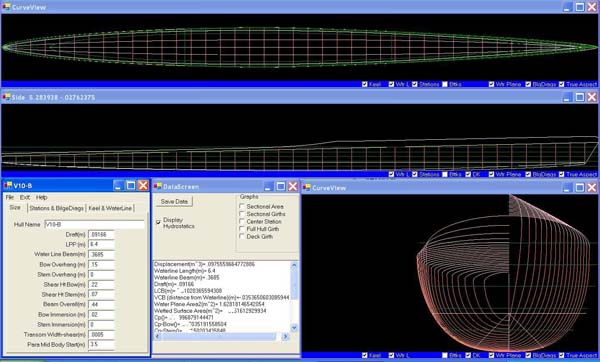
"In contrast with other hull modelling and CAD packages, our software allows us to change parameters like water line, keel line and so on and watch the changes with a much better understanding of what's happening."
In 2004, he joined forces with Oscar Chalupsky and Greg Barton to design a new surfski for Epic.
John said, "The design goals we started out with were:
- It should be as fast as the current top end racing skis.
- The new boat had to be more stable than the current top end racing skis.
- It must handle rough conditions well and surf exceptionally well.
- The hull shape at the seat area must accommodate a seat that's wide enough for most paddlers (including Oscar).
- The paddle entry point should be as close to the centerline of the boat as possible, without risking catching the paddle on the foot pedals."
By using his software, John was able to analyse a number of hull shapes rapidly. "By modifying various hull features we discovered that we could make the hull more stable without sacrificing speed," he said. "I would select the designs that I felt were best, send them to Greg and Oscar for review, and then I'd repeat the process based on their feedback. After 10 of these cycles we had a hull and deck we all felt would have the right balance of speed, stability and seaworthiness." Hence the name, "V10".
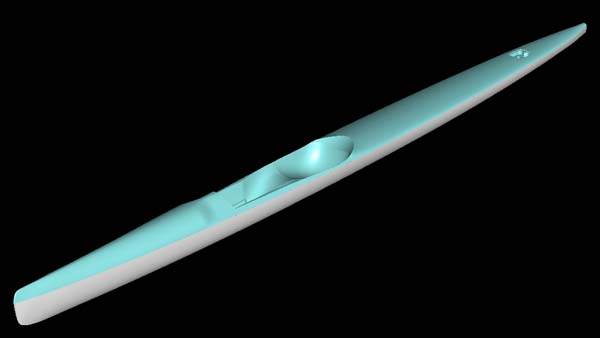
The software showed the theoretical stability and drag (speed) characteristics. Performance in waves was analysed intuitively with input from Oscar Chalupsky and Greg Barton.
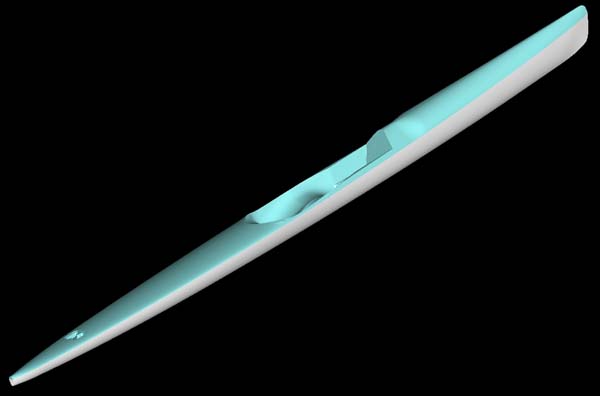
The cockpit details were mostly modelled by Greg using a commercial Computer Aided Design (CAD) package. John added, "Surface modelling of this sort on a computer is particularly gruelling, but Greg did an excellent job of making all the details come together."
Building the Plugs
The plugs were built in South Africa during December 2004. Oscar Chalupsky and Greg Barton laminated the plug for the hull from 18 planks of 25mm superwood, working through the night. The planks were compressed with barrels of water.
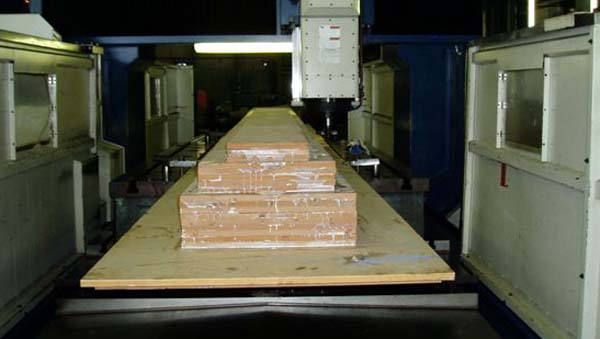
Moving the plug took 40 people - each plug weighed a ton (literally) and was mounted on lengths of railway track.
The CNC machining was done at Dormac in Durban - a firm specialising in ship repairs. The machining of the hull plug took 3 days, working 24 hours a day.
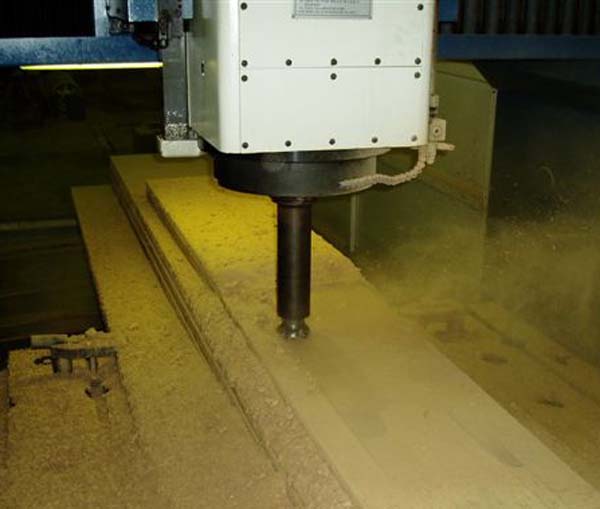
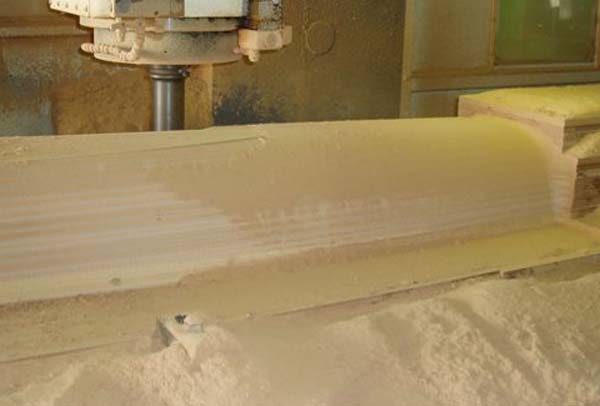
After machining, each plug was painted with 3 layers of wood primer followed by polyurethane primer. The plugs then went through multiple iterations of sanding with 2000grit sandpaper and polishing to achieve the mirror-like surface.
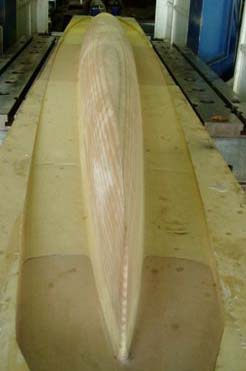
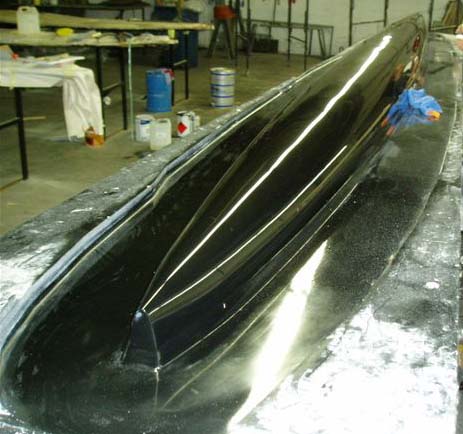
The Deck Plug
The deck plug was built up from 26 layers and over 70 pieces of laser-cut superwood planking. Oscar said they made a mistake by screwing the deck plug together. "We had to take all the screws out again," he said, "to avoid damaging the CNC machine's bit. All part of the learning process!"
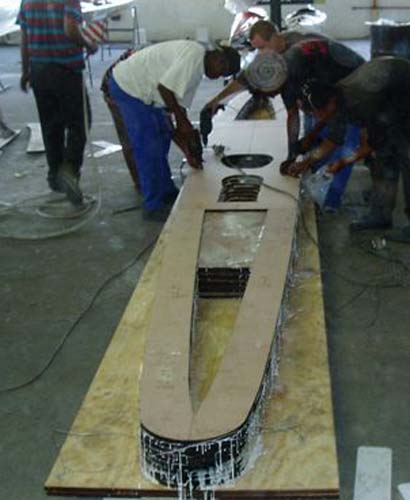
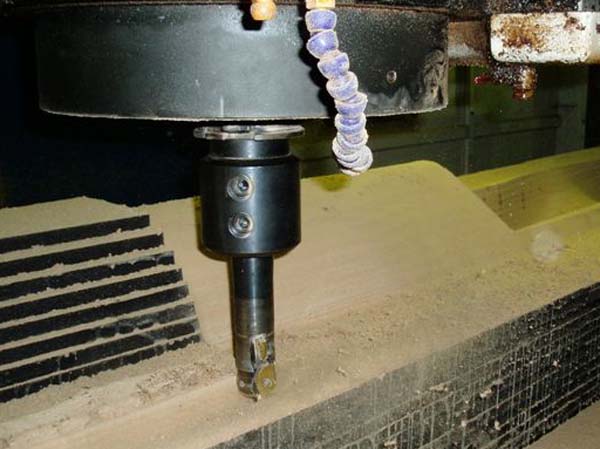
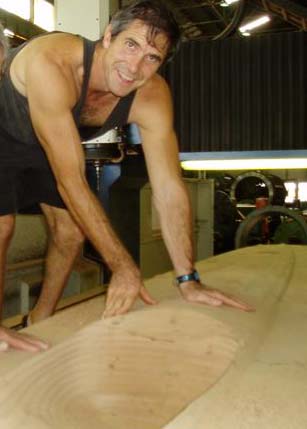
The moulds were built from fibre glass using infusion epoxy resin. (One of the benefits of epoxy is that it hardly shrinks at all as it cures, so the moulds retained the accuracy of the plugs.)
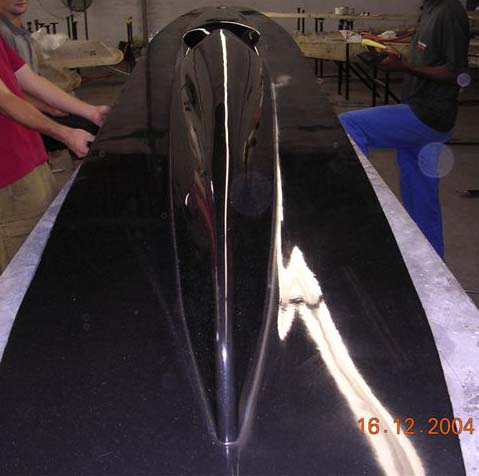
The Venturi
Another selling feature of the V10 is the single drain hole in the cockpit. A characteristic of single footwell skis like the V10 is that they hold a large volume of water, which must be drained as rapidly as possible. Greg said they started with a simple pipe that drained too slowly and again a CAD system was used to design a venturi instead.
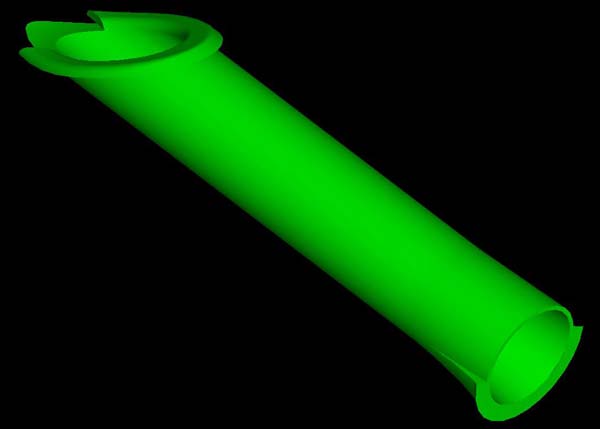
What is a venturi? In essence it's a pipe that has a larger diameter at one end than the other. A pressure differential is created between the two ends of the pipe that has the effect of sucking the water out at a higher rate. A layman's explanation of the venturi effect may be found at: http://home.earthlink.net/~mmc1919/venturi.html
The prototype venturi was also created using a high-tech process. A kind of 3-D printer using a process called stereo lithography literally grew the prototype. Stereo lithography is a process similar to inkjet printing where droplets of plastic are "printed" instead of ink. The result is a 3-D solid rendering of the object being created. The principle is explained further here: http://computer.howstuffworks.com/stereolith2.htm
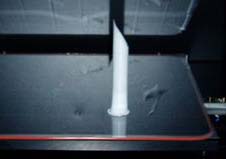
Stringers
The stringers in the new skis are built from Nomex Honeycomb using space-frame designs - space-frame structures are characteristically strong and light and are used in applications like crane booms, roofs and space stations...
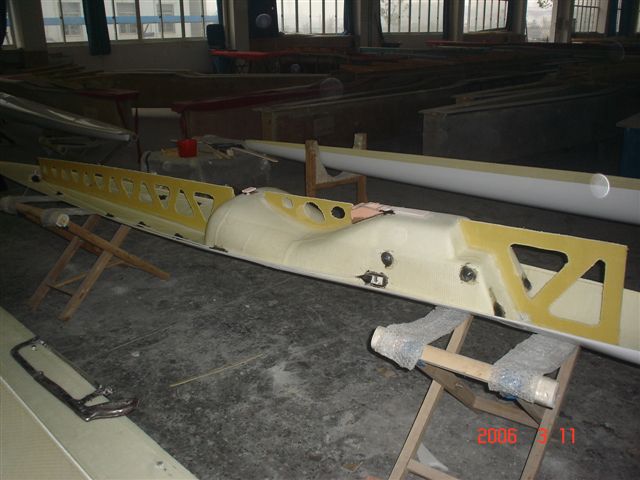
And what of the plugs?
And what happened to the plugs after the moulds had been built? Sadly wood isn't stable enough for long term storage and they were dumped, not having any further purpose. (Glass fibre plugs were created from the initial moulds.)
V10 L
We just received these images of the V10L with the low volume nose.
